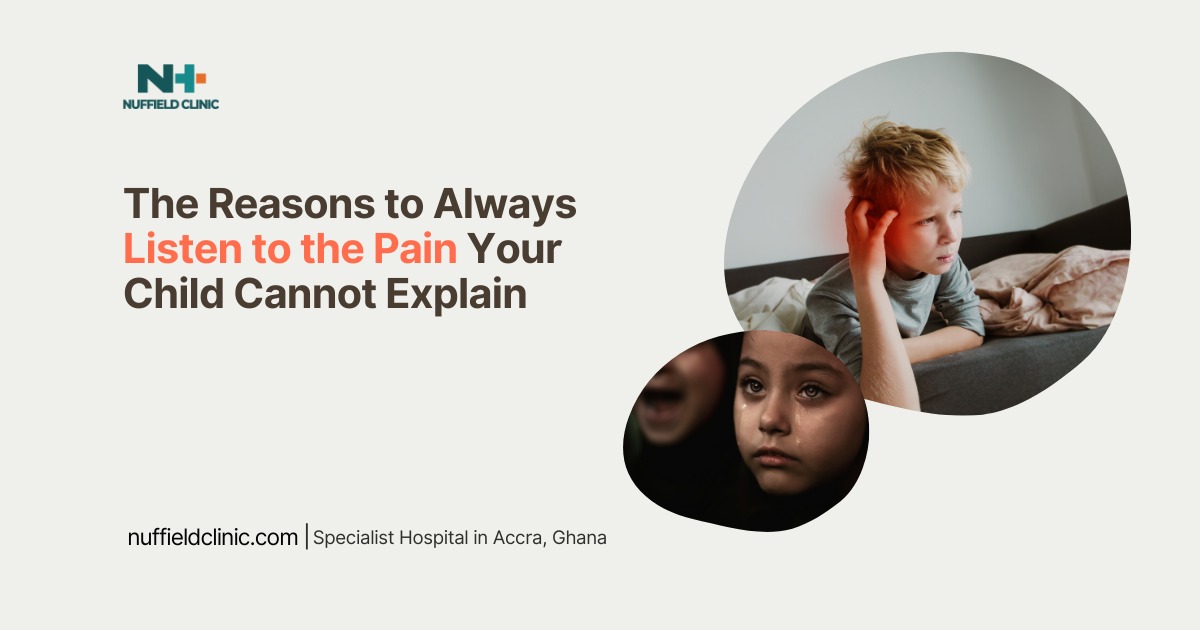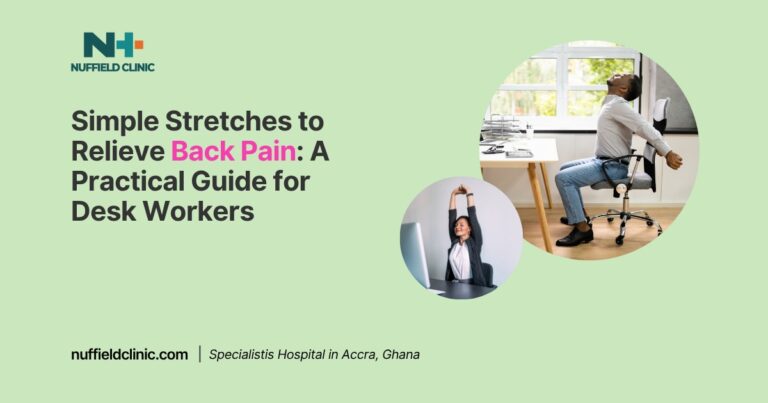The Reasons to Always Listen to the Pain Your Child Cannot Explain

What is the point in paying attention to your child even when they are unable to express their pain or discomfort? Why should parents listen to their children, especially when they cannot explain in clear terms what they’re feeling? Understanding pain in children can be challenging, especially when they are unable to clearly describe what they are feeling.
For parents and caregivers, this can be a source of confusion and worry. While a child’s vague complaint of “my leg hurts” or a refusal to walk may not always indicate something serious, unexplained pain can sometimes be the first sign of an underlying medical condition that needs prompt attention. Listening carefully, even when a child struggles to express themselves, is essential for timely diagnosis and intervention.
Why Children Struggle to Communicate Pain
Children perceive pain differently from adults. Their developing nervous systems, combined with limited vocabulary and emotional understanding, affect how they experience and report discomfort. Younger children may find it hard to distinguish between types of pain or explain where it hurts. What adults recognise as a dull ache, sharp sting, or intense pressure may all be simply labelled by a child as “owie” or “bad.” Pain is also invisible, which makes it harder for others to identify without observing behaviour and asking the right questions.
A child’s ability to communicate pain varies by age and developmental stage. Infants, who cannot speak, show pain through body language such as arching the back, pulling up the legs, squirming, moaning, or crying that cannot be easily soothed. They may also stop eating or sleeping well. Toddlers may use basic terms or gestures to indicate discomfort and might react by crying more than usual or becoming irritable or quiet. Preschoolers, although capable of expressing intensity, often need help to describe where the pain is or what it feels like, and may associate pain with being punished. School-age children tend to be more descriptive, but even they might communicate discomfort indirectly by avoiding activities, limping, or guarding a painful limb.
Children may also interpret pain differently, sometimes seeing it as a barrier to play or a sign that they’ve done something wrong. As a result, they may underreport symptoms or respond in ways that adults do not immediately associate with physical discomfort. However, the familiarity and trust between a child and caregiver can often uncover signs of distress that would otherwise be missed.
Recognising the Importance of Unexplained Pain
Parents often rely on visible injuries to explain their child’s complaints, but pain without an obvious cause can be just as important, if not more so. Children who cannot pinpoint where or why they hurt still deserve close attention, particularly when pain persists, worsens, or occurs with other concerning symptoms. Even subtle behavioural changes, reluctance to play, difficulty sleeping, or withdrawing from routine activities, can point to something significant.
Unexplained pain that occurs without a clear injury should be seen as a signal. Parents are usually the first to notice that something is not quite right. That instinct, shaped by familiarity with the child’s usual patterns and moods, is a valuable indicator that professional evaluation is needed.
Red Flags That Require Urgent Attention
Certain characteristics of unexplained pain are considered red flags that require immediate medical assessment. If the pain is severe enough to interrupt sleep, prevent walking, or cause a child to stop mid-activity, it may indicate a serious underlying condition. Pain that occurs at night and wakes a child from sleep is particularly concerning, especially in the absence of recent trauma.
In some cases, pain is felt in a different location than where the issue actually lies. A hip condition, for example, might cause discomfort in the thigh or knee. This referred pain can delay diagnosis unless clinicians are made aware of the complete picture. When pain cannot be linked to any fall or injury and begins to worsen over time, the concern becomes even greater.
Associated symptoms such as fever, chills, rash, unexplained weight loss, tiredness, or poor appetite can suggest that the pain is part of a broader systemic issue. Swollen lymph nodes or general malaise may point to autoimmune conditions or infections. In other instances, the pain could be a symptom of something more serious, such as malignancy or chronic inflammation.
The Risks of Delaying Diagnosis
Several serious conditions can present initially as unexplained pain in children. Recognising these early, even in the absence of detailed descriptions, can prevent long-term damage and disability.
Septic arthritis, a joint infection, can lead to irreversible damage within one to two days of onset. The infection may destroy cartilage, affect bone growth, and cause permanent joint deformities. If the infection spreads, it can lead to osteomyelitis or sepsis, both of which are life-threatening if not promptly treated.
Juvenile Idiopathic Arthritis, an autoimmune condition, may begin with joint stiffness and pain, especially in the mornings. If left undiagnosed, it can damage joints permanently and cause abnormal growth in bones. It also carries the risk of uveitis, an inflammation of the eye that can result in permanent vision loss.
In adolescents, a sudden or gradual onset of hip pain may signal Slipped Capital Femoral Epiphysis. If not treated early, this condition may cause the bone to collapse due to a lack of blood flow, leading to premature arthritis and long-term hip problems.
Legg-Calvé-Perthes Disease, a condition involving temporary loss of blood supply to the femoral head, is also most effectively treated when detected early. Without prompt intervention, the femoral head may become deformed, affecting future mobility and increasing the risk of hip arthritis in adulthood.
Some children may also present with pain as an early sign of cancer, such as Leukaemia or bone tumours. Unexplained bone pain, when paired with fatigue, fever, or weight loss, should prompt immediate medical investigation. Compartment syndrome, another rare but serious condition, involves increased pressure within muscles that can cut off blood supply, requiring emergency surgery to prevent permanent damage or even loss of the limb.
Supporting Children When They Cannot Fully Explain
Parents are in the best position to interpret the signs when a child cannot explain their pain. Understanding their behaviours, routines, and usual patterns helps identify when something is different. When unexplained pain is accompanied by withdrawal from activities, changes in sleep, or altered mood, it is time to consult a healthcare professional.
Because of the potential for irreversible harm in certain conditions, waiting to see if the pain goes away on its own may not be the best approach. A careful clinical examination, possibly followed by imaging or blood tests, can uncover hidden causes and ensure the child receives the treatment they need.
Unexplained pain is never just in a child’s head. Even if they cannot articulate the location or nature of their discomfort, their behaviours and your observations provide the clues. Trusting your intuition as a caregiver and seeking help early can protect your child from long-term complications and support their ongoing development and wellbeing.
If your child is showing signs of pain that they cannot explain, book a consultation with a pediatric specialist at Nuffield Clinic today.






